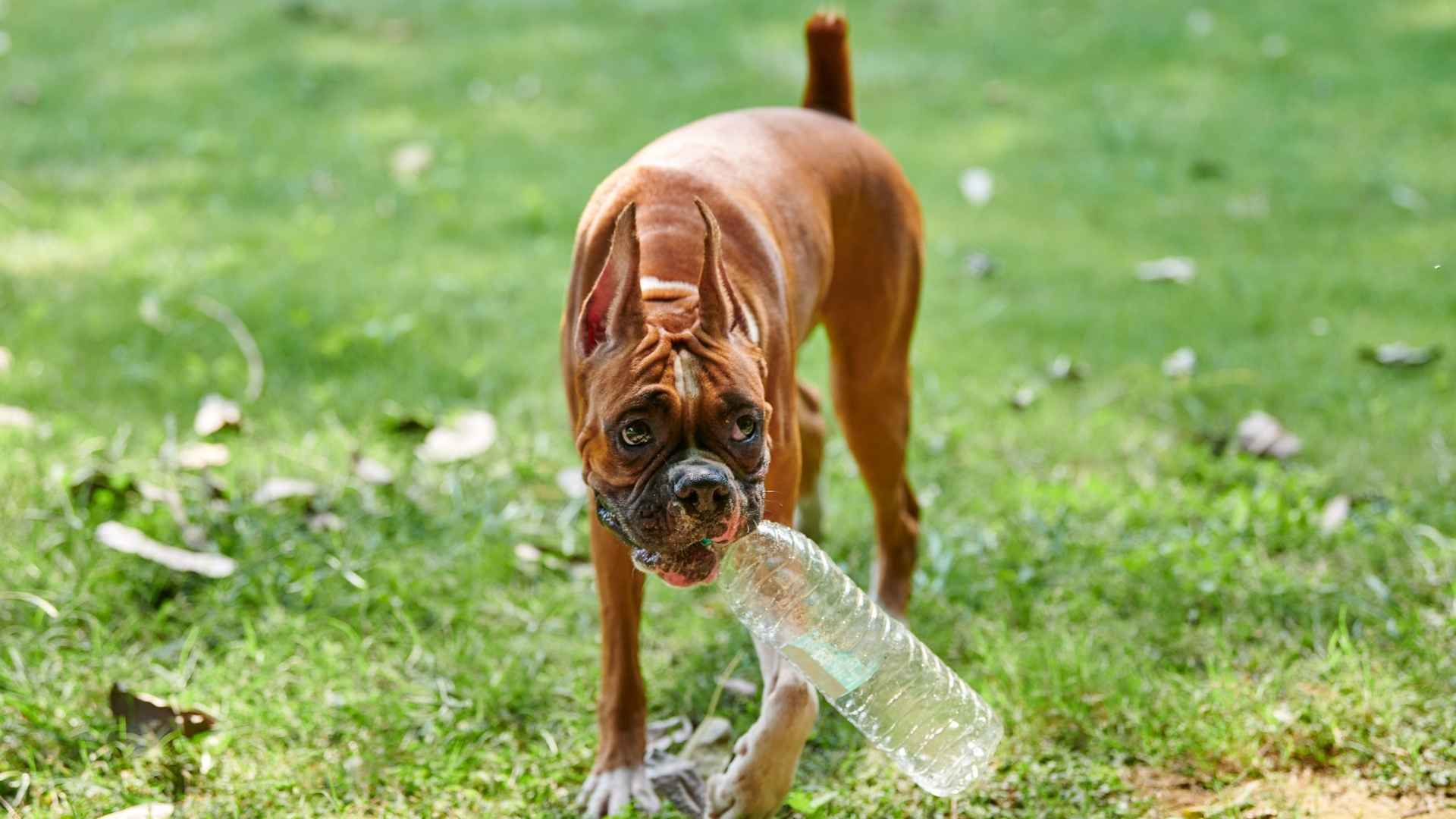Some dogs have a habit that feels almost ceremonial: finding an empty plastic bottle and carrying it proudly across the yard as though it’s a prized possession. This playful behavior is a mix of instinct, curiosity, and joy in having something to “own,” and certain breeds display it more than others.
Dogs with strong retrieving instincts or an eagerness to carry objects often see a bottle as a natural stand‑in for the items they were bred to fetch. Others are drawn to the sound, the crunch beneath their jaws, or the simple fun of toting something around while wagging with pride.
The breeds in this list are known for turning ordinary objects into trophies. They’ll grab a plastic bottle, parade it around the house or yard, and hold onto it like a victory prize. For them, it’s an activity, a game, and a small way to show off their spirited personalities.
Dog Breeds That Carry Plastic Bottles Like Trophies
1. Golden Retriever
Golden Retrievers originated in Scotland in the mid‑19th century, bred to retrieve game for hunters on both land and water. They were carefully selected for their “soft mouths,” a trait that allowed them to carry delicate game birds without damage.
Today, that soft grip shows up in their everyday behavior. Many Goldens will pick up bottles, toys, or sticks and parade them proudly around the house or yard, holding them carefully as they go.
Their thick, water‑repellent coat protects them in harsh weather. Heavy seasonal shedding means grooming is a weekly (and sometimes daily) task during spring and fall.
As per PDSA, Golden Retrievers are famously easy to train and thrive on structured lessons. Fetch games and object‑carrying tasks keep them engaged, giving them the sense of purpose they seem to enjoy.
Because they’re a large breed, joint health is a key focus. Screening for hip and elbow dysplasia and keeping their weight under control helps prevent mobility issues later in life.
Fun Fact
Golden Retrievers were among the first dogs chosen for guide work, thanks to their gentle mouths and ability to safely carry objects on command.
2. Boxer
Boxers were developed in Germany in the 1800s from hunting and working dogs. Bred for athleticism and stamina, they’ve carried their energetic, clownish nature right into the modern household.
Boxers love to grab anything they can lift—bottles, toys, even stray shoes—and run through the room with it, heads held high. It’s a mix of play and pure self‑expression.
Heart health is a major consideration for the breed. Cardiomyopathy and other cardiac issues are monitored closely by responsible breeders and owners alike.
Their short, tight coat is simple to care for. A quick brush every week keeps it shiny, and mud or dirt from outdoor play wipes off easily.
Boxers are clever but easily bored. They do best with fast‑paced, interactive training sessions that keep them moving, rather than endless repetition of the same commands.
Fun Fact
Boxers are famous for the “kidney bean dance,” a wiggle‑and‑spin they perform when excited, often with something proudly clamped in their mouths.
3. Labrador Retriever
Labrador Retrievers were first bred in Newfoundland to help fishermen haul nets and retrieve fish. They were later refined in England, creating the cheerful, hard‑working breed we know today.
Their instinct to carry is almost constant. Many Labradors will latch onto a bottle, rope, or glove just to have something in their mouths as they trot along beside their owner.
Their double coat sheds heavily, especially during spring and fall. Brushing several times a week helps keep the fur from piling up around the house.
Training comes naturally for Labradors. They’re eager to learn and love having jobs—fetch, carry, deliver—anything that lets them take part in family routines.
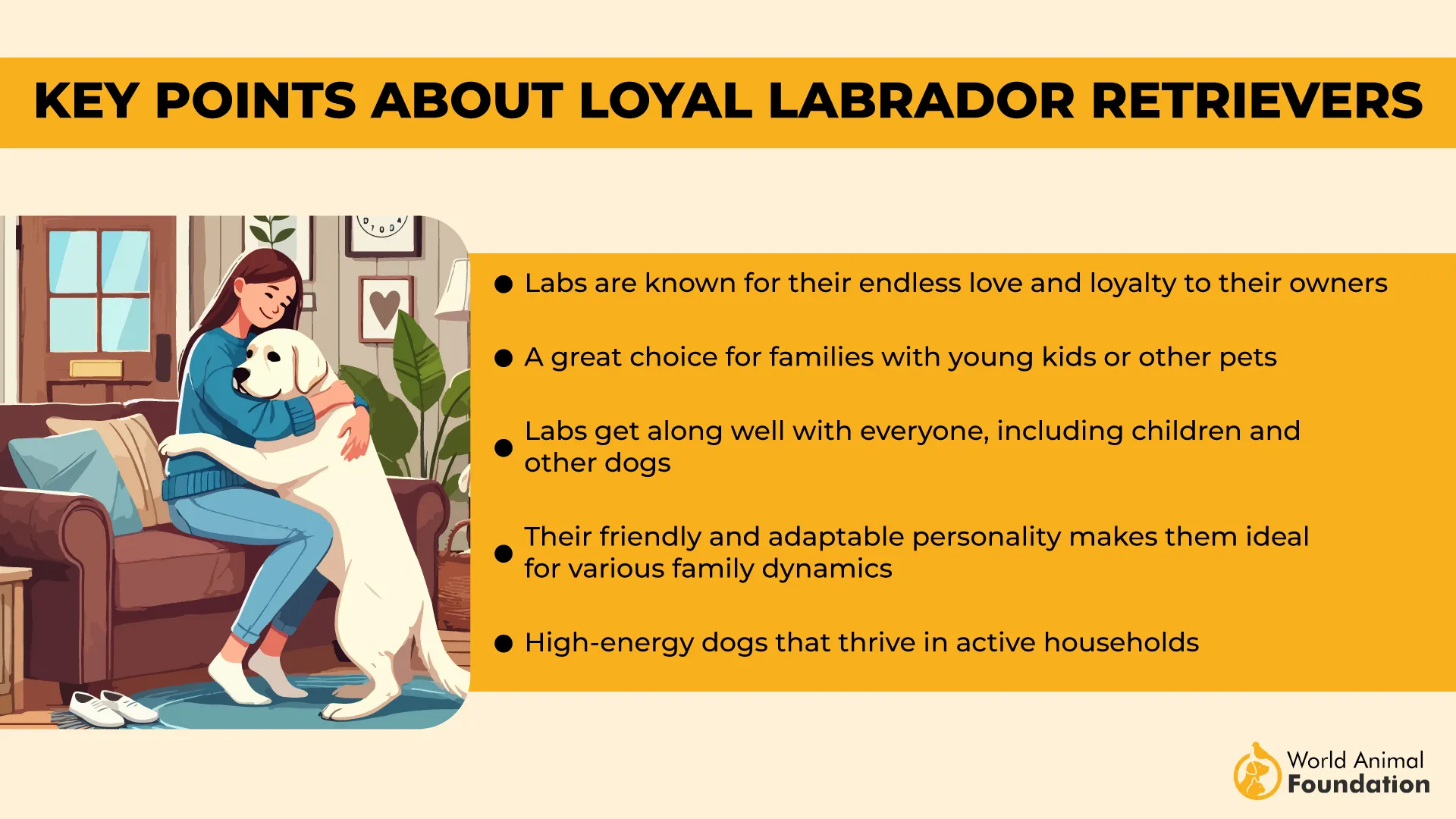
Labradors tend to overeat and can gain weight easily, so measured feeding and daily exercise are essential to keep them healthy and mobile.
Fun Fact
A black Labrador Retriever was the very first dog to appear on the cover of Life magazine in 1938, marking the breed’s surge in popularity.
4. German Shepherd
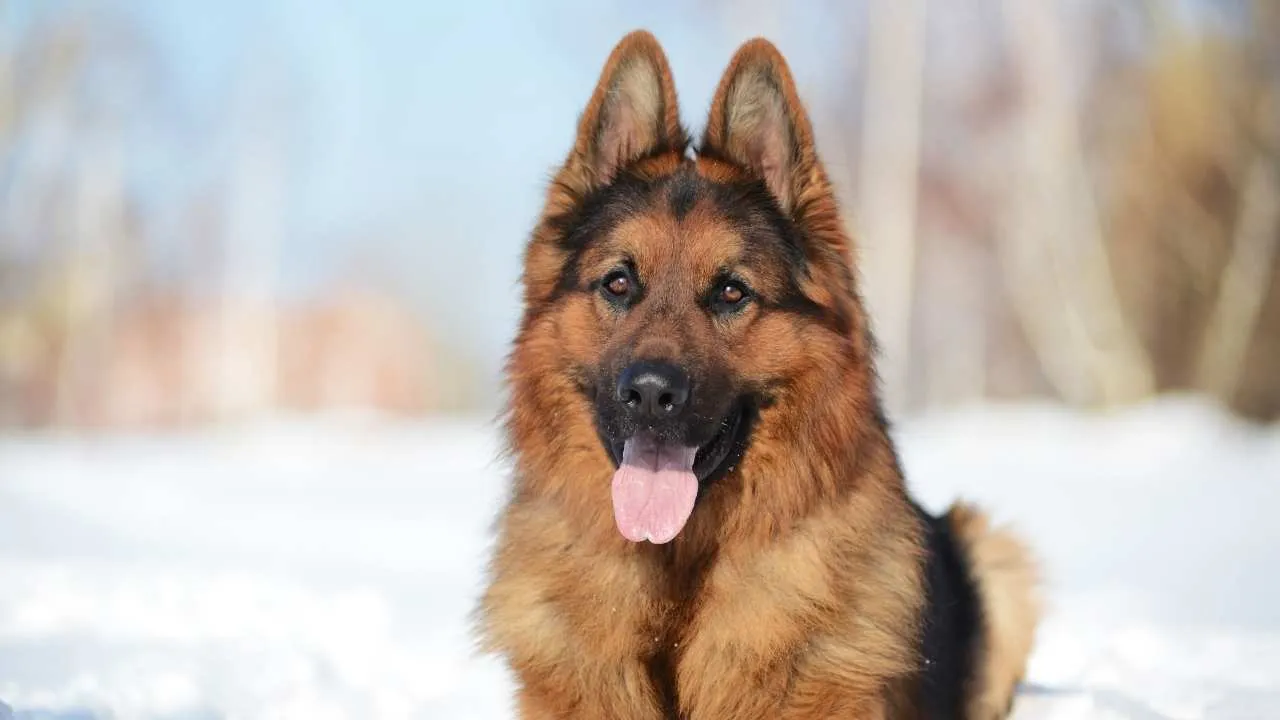
The German Shepherd was developed in late‑19th‑century Germany as a herding dog. Its versatility quickly made it a favorite for military, police, and working roles worldwide.
These dogs like to “help” with whatever their people are doing. It’s common to see a Shepherd grab a bottle, a ball, or even a misplaced tool and carry it as if assigned an important task.
German Shepherds have a thick double coat that sheds steadily and “blows out” twice a year. Grooming is especially important during those heavy shedding seasons.
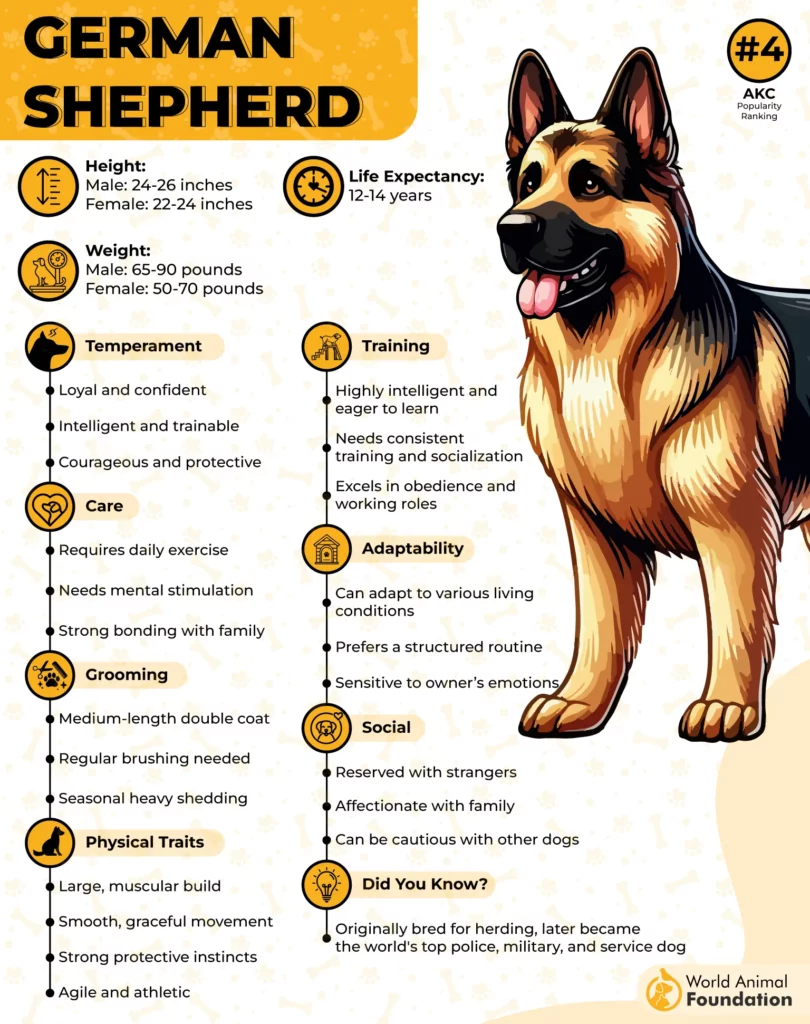
As per Britannica, they thrive on structured, complex training that challenges their intelligence. Tasks involving carrying or delivering items keep them sharp and satisfied.
The breed can be prone to degenerative myelopathy, a spinal condition that affects mobility. Many owners stay proactive with vet screenings and joint care to keep them active for longer.
Fun Fact
A rescued German Shepherd named Rin Tin Tin became one of Hollywood’s first canine stars, appearing in dozens of films during the 1920s.
5. Saint Bernard

Saint Bernards were bred by monks in the Swiss Alps to locate and assist travelers stranded in the snow. Their massive size and calm disposition made them perfect for rescue work.
Their gentle nature means they often carry objects slowly and carefully, whether it’s a toy, a stick, or the occasional crinkling bottle.
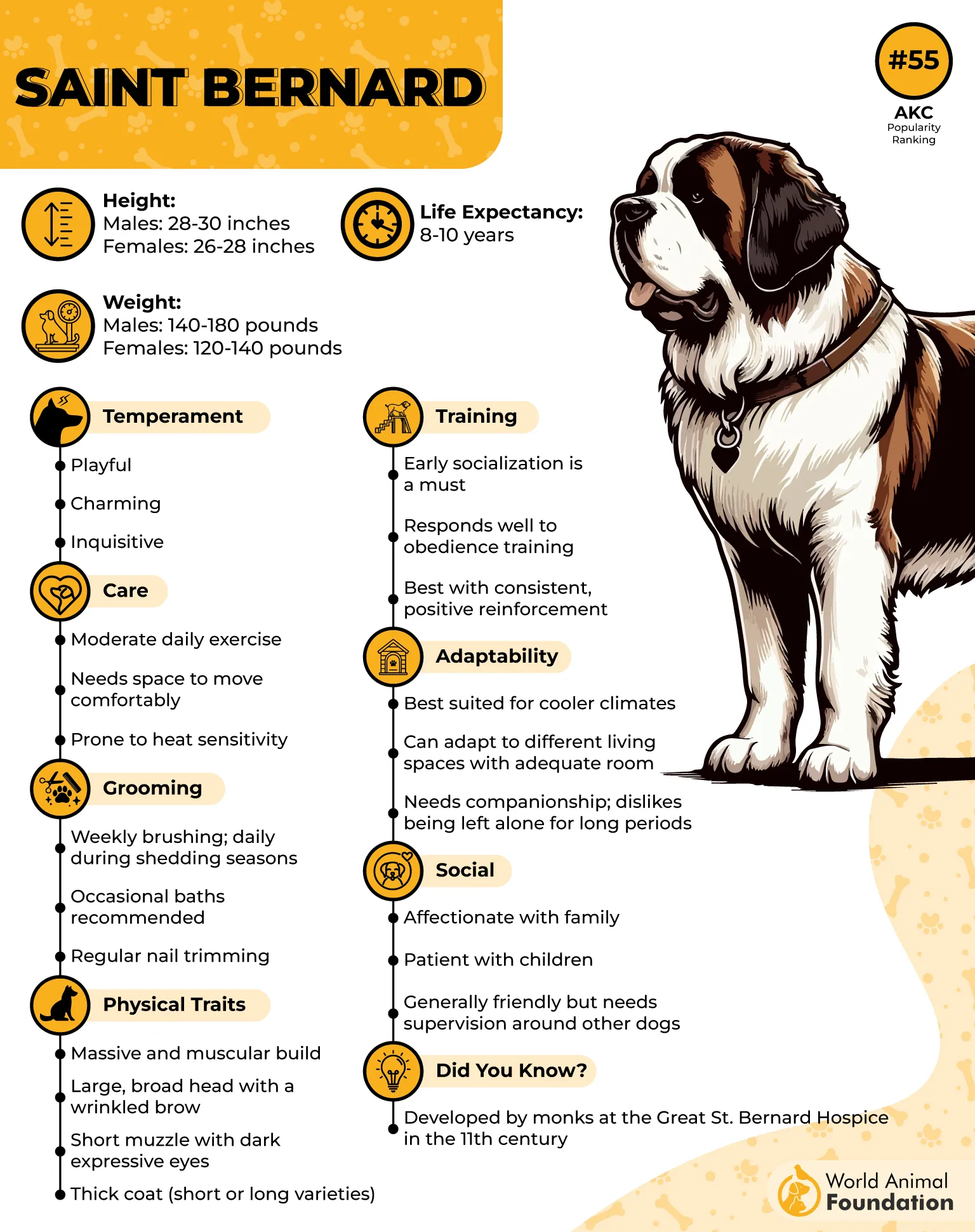
The Saint Bernard’s heavy coat demands frequent brushing. Snow, burrs, and dirt cling easily, and matting can form quickly if grooming is skipped.
Training is most effective when it’s patient and steady. These dogs are eager to cooperate, but their sheer size means early guidance is essential.
Saint Bernards are sensitive to heat and can overheat quickly. Owners usually plan outdoor play and walks for early morning or evening.
Fun Fact
Stories of Saint Bernards saving lost travelers date back hundreds of years, cementing their legend as the Alpine rescue dog.
6. Australian Shepherd
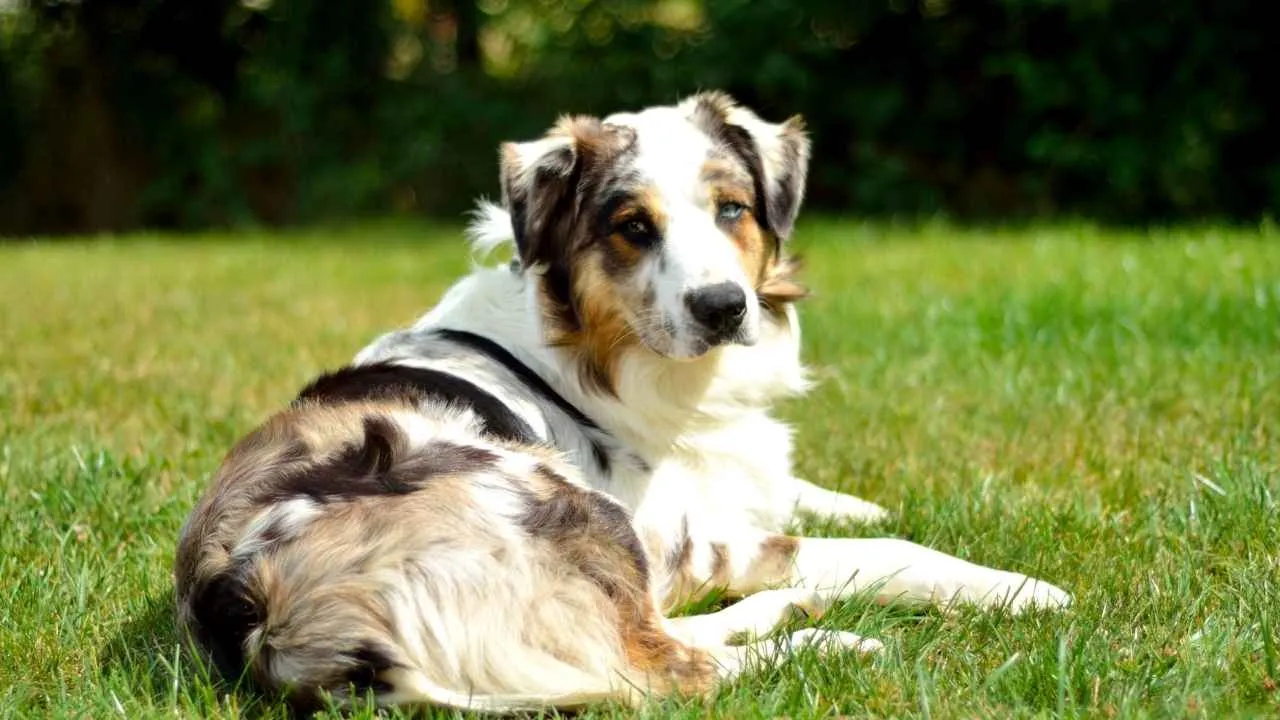
Despite its name, the Australian Shepherd was developed in the American West to herd livestock. Their high energy and intelligence made them a favorite among ranchers.
Many Aussies see carrying as part of their natural “job.” Bottles, ropes, or toys often end up in their mouths as they race around looking for something to do.

Australian Shepherds have weather‑resistant coats that shed seasonally. Brushing several times a week helps manage shedding, and it also keeps debris from tangling in their fur.

According to the AKC, they thrive on challenging, varied training. Commands that involve fetching, sorting, or carrying tap into their herding instincts and keep their minds busy.
Some Aussies carry the MDR1 gene mutation, which affects their reaction to certain medications. Testing helps vets tailor safe treatment plans for them.
Fun Fact
Many Australian Shepherds are born with naturally bobbed tails, a trait that helped prevent injuries when working around livestock.
7. Bernese Mountain Dog
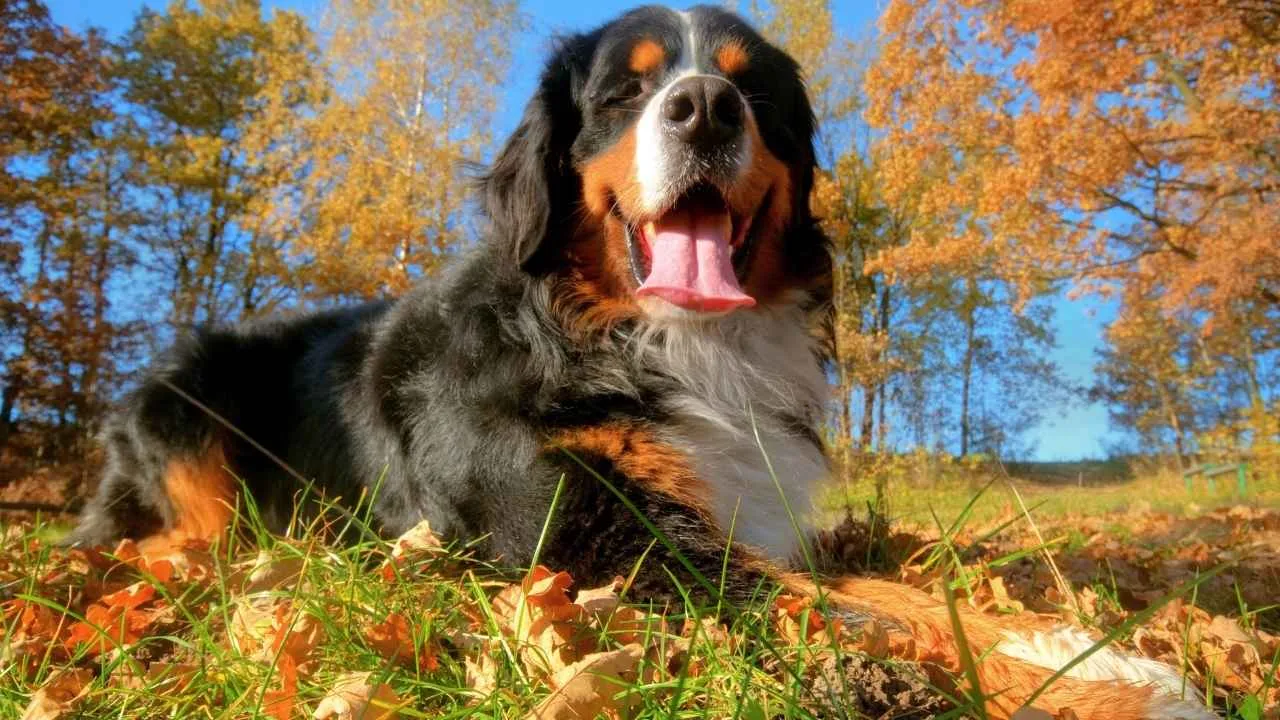
The Bernese Mountain Dog comes from Switzerland, where it was used to pull carts and assist farmers with daily chores. Their strength and patience made them trusted working companions.
They often pick up and carry whatever they find—bottles, sticks, gloves—as they move slowly but purposefully across yards or fields.
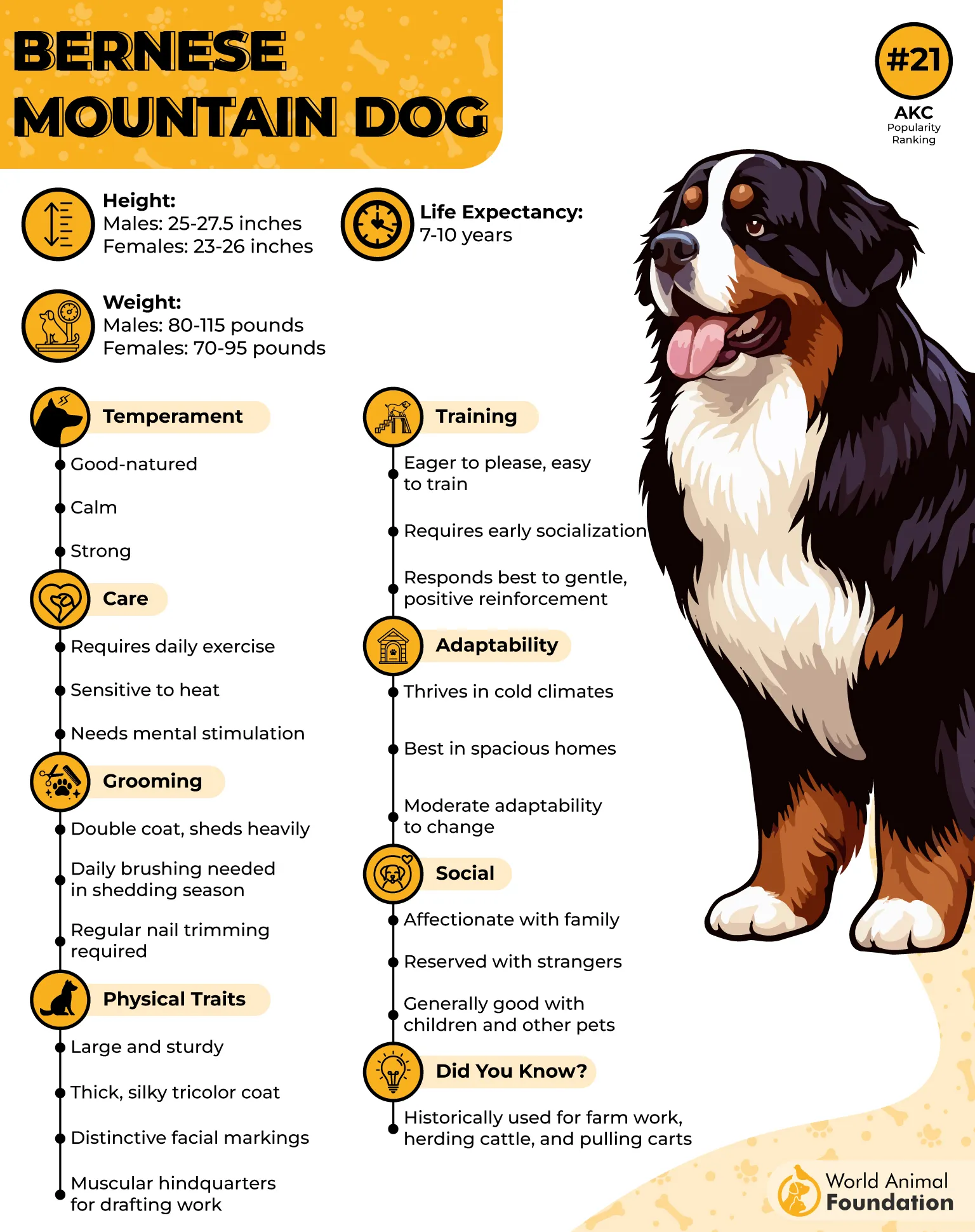
Bernese Mountain Dogs have thick, tricolor coats that shed steadily. Frequent brushing helps manage the hair and prevents tangles.
They respond well to calm, consistent training sessions. Carrying tasks fit naturally into their temperament, and they approach them with quiet focus.
This breed has a shorter lifespan than many others and can be prone to certain cancers. Responsible breeding and regular veterinary care are key to maintaining their health.
Fun Fact
Bernese Mountain Dogs were once used to pull dairy carts to market, hauling goods through Swiss villages with steady determination.
Conclusion
Dogs turn ordinary objects into games, and sometimes an empty water bottle becomes the most important thing in the yard. What started as a playful piece of plastic can turn into an exciting routine that the dog looks forward to every time. Owners find themselves laughing at the small events that unfold as the dog proudly carries the “trophy” across the grass.
Every person who has seen this instinct in action knows it isn’t just about the object—it’s about the action of carrying, parading, and feeling involved. Choosing the right items for them to obtain matters, since rough edges or cracked bottles can lead to injury if not checked.
With a little thought, the habit becomes safer and even more enjoyable. The dog still gets the thrill they wanted, and the moment becomes one more reminder of how even the simplest things can feel special when shared with them.


